Drywall Mud in Bathroom Renovations: Insights and Tips
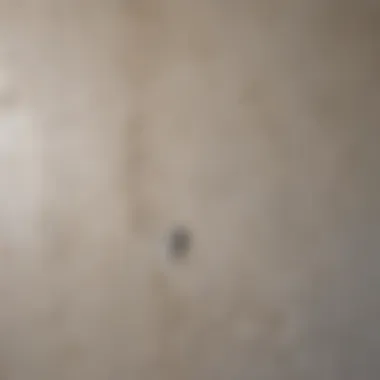
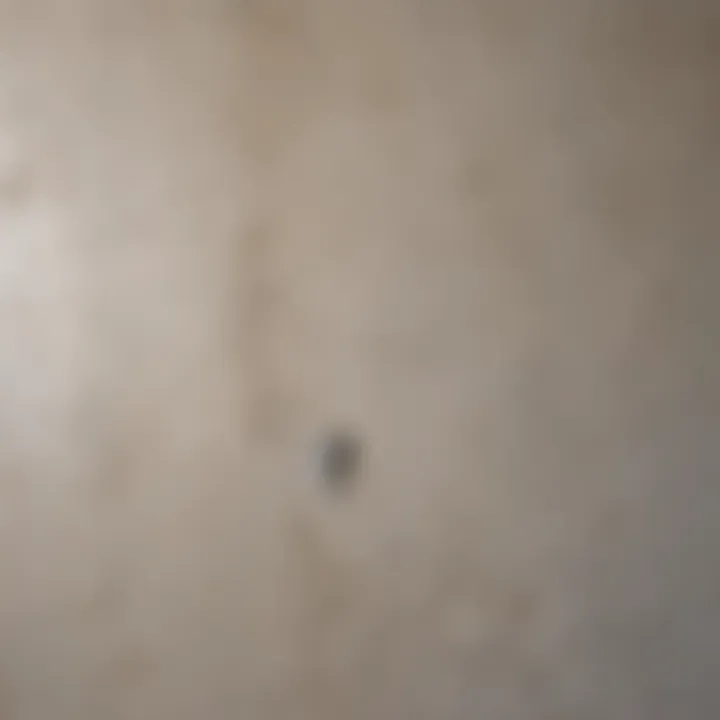
Intro
When it comes to bathroom renovations, many homeowners often overlook a vital material—drywall mud. This compound, primarily used for finishing drywall seams, plays a more nuanced role in these often moisture-prone areas. With the right approach, drywall mud can significantly enhance the durability and aesthetics of your bathroom. In this guide, we'll delve into the various aspects of working with drywall mud in bathrooms, targeting both the detail-oriented DIY enthusiast and those simply looking to learn.
Throughout the sections, we'll break down the essentials—from materials and techniques to common issues and how to troubleshoot them. So, whether you are an experienced homeowner or a novice, this comprehensive overview will equip you with all the know-how for a successful bathroom renovation.
Materials:
Before plunging into your project, it's crucial to gather the right materials. Here’s a list of what you'll need:
- Drywall Mud: About four 5-gallon buckets—this covers a decent-sized bathroom easily. Make sure you choose a lightweight or all-purpose version for ease of handling.
- Drywall Sheets: For patches or if you're installing new panels; 1/2" sheets are standard for bathroom walls.
- Drywall Tape: You’ll need about 200 feet of paper tape.
- Primer: One gallon of quality primer, moisture-resistant if possible, can go a long way.
- Water: For mixing with the drywall mud, as well as cleaning up.
- Sandpaper: A mixed-grit pack (80-grit for initial sanding, and 120-grit for final touch-ups).
- Utility Knife: For cutting drywall sheets and tape.
- Mixing Tray: To mix and hold drywall mud while you’re working.
- Mud Pan: Helps in holding the mud while applying it with the knife.
- Trowel or Drywall Knife: 12-inch knife for wide applications, and a 6-inch one for corners.
- Ladder: If working on a high ceiling or walls.
Detailed Instructions:
Working with drywall mud filled with potential might look daunting, but breaking it down into manageable steps simplifies the task.
- Preparation: First, ensure the area is clear of moisture and clean as a whistle. Remove old paint, loose plaster, or wallpaper. You don’t want all that messing with your new finish.
- Mixing: In your mixing tray,combine 3 parts dry drywall mud with 1 part water. Mix well until the consistency is smooth but not runny.
- Applying First Coat: Using the 12-inch knife, scoop some mud and apply a thin layer over joints and screw holes. An even coat is key.
- Taping: Place drywall tape over the mudded seams. Press lightly to ensure it’s embedded in the mud.
- Second Coat: Once the first coat has dried (usually about 24 hours), apply a second, slightly wider coat of mud, feathering the edges to blend into the wall.
- Sanding: After the second coat dries, sand down the area gently with 80-grit sandpaper. Follow up with the finer grit for a smooth finish.
- Finishing Touches: Wipe the dust off with a damp cloth, and apply your moisture-resistant primer before painting.
Technical Aspects:
The tools and timing specifics you use can dramatically impact the result of your project.
- Tools You Will Need: Utility knife, mixing tray, flat drywall knives (6" and 12"), mud pan, sandpaper, ladder.
- Timing: Expect a full day for project preparation. Allow drying time, which could take 24 hours per coat, so plan your tasks accordingly.
- Critical Techniques: Ensure your knife angle is consistent to avoid uneven application. Feather the edges of each coat to make sanding easier later.
Sequential Steps:
For effective installation of drywall mud, keep a sequential approach:
- Cut and Fit Drywall: If replacing walls or panels, cut and fit them first.
- Apply First Coat of Mud: Fill seams, screw holes, and be thorough but don’t overdo it.
- Taping Process: Press tape into the wet mud.
- Second Coating and Feathering: Wider application after the first coat has set.
- Sanding Duration: Be gentle but thorough; around 20-30 minutes should suffice per area.
Troubleshooting Tips:
Many challenges arise during this process, but most can be solved with a bit of foresight:
- Issue with Cracking: Too thin of a coat can lead to cracks when drying. Ensure each coat is ample enough to seal.
- Visible Seams: Post-painting seams visible? More sanding is needed to smooth out transition areas.
- Bubbles or Bumps: Bubbles can occur if the mud is mixed too quickly or with too much water. Practice a gentle mix to avoid that.
One important thing to remember is that practice makes perfect. Don’t rush the process, and be patient with drying times. This is crucial in ensuring your bathroom looks sharp and remains durable over time.
As you embark on this project armed with the right materials, techniques, and a solid plan, you’re setting the stage for a successful bathroom renovation that’ll withstand the test of time. Happy renovating!
Understanding Drywall Mud
When it comes to bathroom renovations, many folks overlook the subtleties of materials used in the construction phase. Yet, drywall mud, or joint compound, plays a fundamental role not just in aesthetics but also in ensuring durability, particularly in those moisture-laden environments. Understanding the different types of drywall mud and their applications can significantly affect the final outcome of a project.
Definition and Composition
Drywall mud is primarily a paste-like substance formulated from various ingredients such as gypsum dust, water, and sometimes additives for bonding. This combination gives it a smooth texture, making it suitable for filling in gaps, covering seams, and prepping walls for paint or wallpaper. The compound’s flexibility after drying also allows for minor adjustments during the finishing stage.
Types of Drywall Mud
Different projects call for different types of drywall mud. It’s essential to understand the available varieties to select the most appropriate one for your bathroom renovation. Here’s a breakdown of the most common types:
All-Purpose
All-purpose drywall mud is just that—versatile. It’s suitable for various applications, from taping to finishing. The key characteristic of this mud is its ease of use, making it a popular choice among DIY enthusiasts and professionals alike. One unique feature is its balanced formulation that enables it to lay down smoothly without being overly thick or difficult to spread. However, while it’s handy, many find it not quite as robust under high moisture as other specialized compounds.
Taping
Taping compound is designed specifically for filling gaps where drywall sheets meet. The important feature of taping mud is its high bonding strength, which ensures a solid finish along seams. This type of compound can endure some moisture exposure, making it adequate for initial bathroom applications. The downside, however, is that taping mud typically requires sanding more than other types, which can create a dusty mess during the project.
Finishing
Finishing mud is lighter and smoother than its counterparts. Its notable characteristic is that it dries to a fine, sandable texture, making it perfect for the final touches in a bathroom renovation. People often prefer this type for its ease of application over taped seams, as it effortlessly fills in the small imperfections. However, it may not adhere as well as tape or all-purpose mud under damp conditions, requiring homeowners to be cautious when selecting their finishing material.
Lightweight
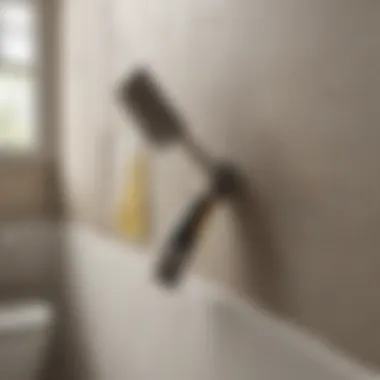
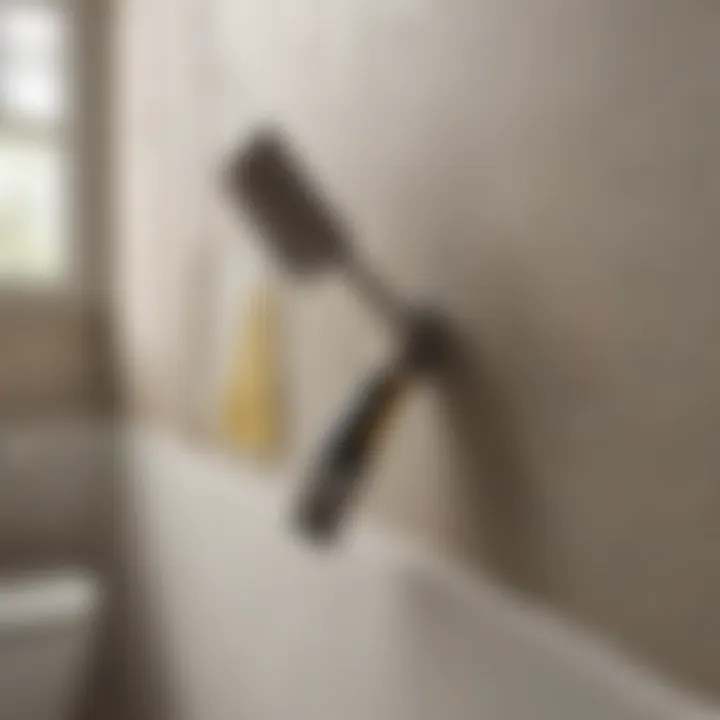
Lightweight drywall mud is ideal for projects demanding minimal weight. The key trait here is its reduced density, allowing for easier application and quicker drying times. Hobbyists and professionals value it for its convenience, especially when working overhead. Despite its advantages, one should note that lightweight mud may not provide as strong a seal in high-humidity environments, potentially leading to issues in bathrooms over time.
In summary, understanding the composition and specific types of drywall mud is essential in ensuring the longevity and quality of your bathroom renovations. Selecting the right type can make a world of difference in the final result.
Importance of Drywall Mud in Bathrooms
In any bathroom renovation, understanding the critical role of drywall mud is paramount. While it might not be the first thing that comes to mind when planning a beautiful and functional space, drywall mud is a unsung hero that elevates aesthetics and ensures durability. Its significance can be attributed to several key aspects that every homeowner should consider.
Moisture Resistance
Bathrooms are unique environments, with humidity levels that fluctuate throughout the day. The application of drywall mud plays a significant role in enhancing moisture resistance. Utilizing drywall mud can help seal joints and create a more cohesive barrier, ultimately preventing water from seeping into the drywall beneath. Lack of proper sealing can lead to serious issues, like mold growth and drywall deterioration. The right product will fortify the drywall surface against mold and mildew, ensuring a healthier home.
"Investing in moisture-resistant drywall mud is investing in the life of your renovation."
When discussing moisture resistance, it's essential to recognize that not all drywall mud is created equal. Some formulations are specifically designed for high-moisture environments, providing an extra layer of security against the elements. These are worth exploring if you aim to protect your investment.
Surface Preparation
Another crucial element of drywall mud's importance in bathrooms lies in its contribution to surface preparation. Before diving into the decorative phase, proper prep work is essential. Applying drywall mud helps to achieve a smooth, even surface, making it easier for subsequent layers of paint or tile to adhere properly. An uneven wall can lead to a less-than-desirable finish that catches the eye for all the wrong reasons.
Proper surface preparation involves several key steps:
- Cleaning the Surfaces: Dust and debris can prevent mud from adhering well, so start by cleaning the area thoroughly.
- Applying Joint Tape: For seams and corners, joint tape provides additional support.
- Multiple Layers: Don't rush the process. Applying multiple thin layers of drywall mud will achieve the desired level of smoothness and durability.
Ultimately, the objective of these preparation techniques is to create a flawless canvas for your finishing touches. This foundation is essential when you want your bathroom renovation to shine for years to come, supporting not just aesthetic appeal but also the overall integrity of the renovation. Catering to surface preparation now will save time, effort, and expense down the road.
By keeping these considerations in mind, housewives and homeowners can reap the benefits of drywall mud, transforming ordinary spaces into beautiful retreats.
Application Methods
Understanding the application methods of drywall mud is pivotal, particularly in bathroom renovations. The right approach not only ensures a smooth finish but also enhances durability against moisture. There are various aspects to consider, such as preparation techniques, application tools, and drying practices. Getting these elements right can make the difference between a job well done and a renovation that ends up being a costly headache. In this section, we’ll break it down into manageable parts that cater to both seasoned DIYers and novice renovators alike.
Pre-application Preparation
Choosing the Right Tools
When it comes to applying drywall mud, selecting the appropriate tools can't be overstated. Quality tools make the job not just easier but also significantly improve the end result. Essential tools such as taping knives, mud pans, and trowels come into play here.
- Taping Knife: This tool ensures an even application of drywall mud, allowing you to spread without creating unwanted lines. A wider knife, say 10 to 12 inches, is often favored for larger surfaces, while a 6-inch knife is excellent for corners.
- Mud Pan: Keeps your compound accessible while you work. It holds enough product so you’re not constantly running back to the bucket, conserving time and energy.
- Trowels: Perfect for achieving a smooth finish, a good trowel can help blend seams seamlessly.
Using these tools enhances efficiency and quality. However, if you opt for cheaper alternatives, you risk uneven finishes and additional work down the line.
Room Ventilation and Safety
Another crucial aspect is ensuring adequate ventilation in your workspace. Bathrooms are typically smaller spaces, which might trap fumes from the drywall mud. Good ventilation not only safeguards your health but also assists in the drying process.
- Airflow: Open windows and use fans to keep air circulating. Proper airflow reduces indoor humidity, allowing the mud to dry more effectively and reducing the risk of mold growth.
- Safety Gear: It's wise to wear a mask and safety goggles. Some compounds can be irritating, and goggles protect your eyes from debris.
While it might seem tedious at first, prioritizing ventilation and safety will pay off. A well-ventilated space can improve the quality of your work, resulting in a cleaner finish.
Application Techniques
Using Trowels and Knives
Using trowels and knives is pivotal in manipulating drywall mud, impacting both application and final finish. The choice between the two can alter your approach dramatically. Trowels are generally better for large areas, while knives excel at smaller, detailed work.
- Trowel Use: A trowel offers a flat surface that excels in spreading mud wide and evenly across large patches. This makes it an easy choice for layering. However, it requires practice to master its technique fully.
- Knives for Edges: For corners and seams, a high-quality taping knife allows for precision that trowels can’t offer. The thin blade can fit into tight spaces and offer a finer, cleaner edge.
The key takeaway here is that both tools have their unique strengths. Knowing when to use each can significantly enhance your drywalling prowess.
Layering for Thickness
Layering drywall mud is a technique that achieves depth and resilience in your finish. Instead of trying to cover imperfections in one thick application, layering enables better control over the drying process.
- Initial Layer: Start with a thin coat to cover seams and flaws. This layer should dry before you add more compound.
- Subsequent Layers: Each additional layer builds upon the previous one but should be progressively thinner. This approach prevents cracking and curling during drying.
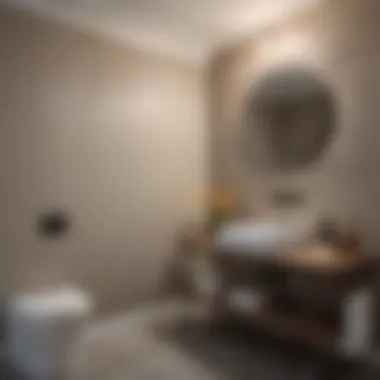
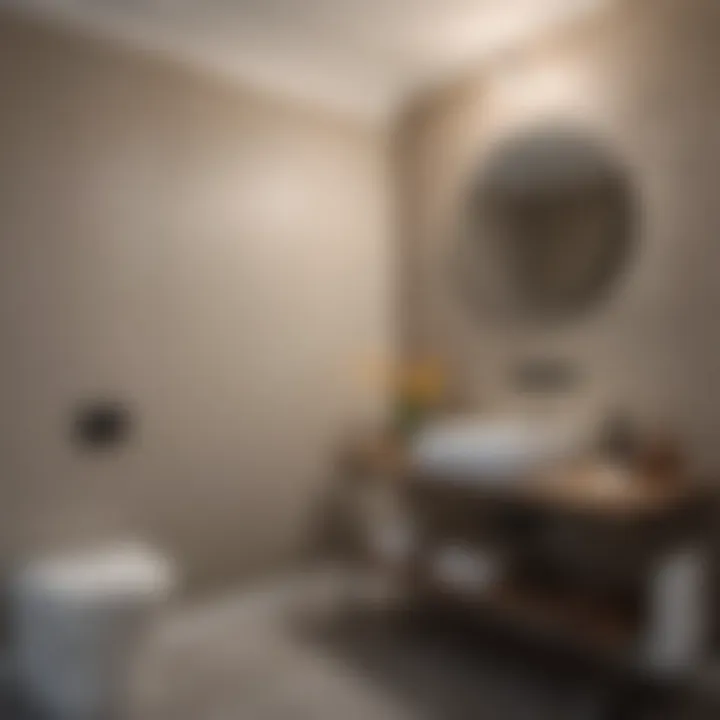
Layering requires patience but pays off with a more robust and aesthetically pleasing finish. It ensures that the mud adheres well and empowers future painting or sealing efforts to yield satisfactory results.
Drying and Curing Processes
The drying and curing stages are often overlooked but are essential for achieving a polished look that stands up over time. Techniques in this stage directly impact your renovation’s durability and visual appeal.
- Drying Time: Allow sufficient time between each layer for drying. This will vary depending on humidity and temperature but generally takes 24 hours. Failing to do so can result in bubbling or cracking.
- Curing: After the final layer, a thorough curing period of about a week is suggested. During this time, avoid excessive moisture in the bathroom.
Ultimately, it’s the combination of knowing your tools, preparing properly, employing the right techniques, and allowing adequate time to dry that leads to a successful application of drywall mud in your bathroom renovation.
Challenges of Using Drywall Mud in Bathrooms
Using drywall mud in bathrooms comes with its fair share of hurdles. Despite its many advantages, one must tread carefully when applying this material in moisture-laden spaces. Knowledge of the challenges ensures effective planning and execution, allowing homeowners to maintain the beauty and durability of their renovations. Understanding these complexities directly affects the longevity and safety of the installations. Here, we will discuss two primary challenges: dealing with humidity and resistance to mold growth.
Dealing with Humidity
Humidity takes center stage as a major concern in bathroom environments. Unlike other rooms, bathrooms can experience shifts in moisture levels due to steam from showers or baths. Such consistent exposure can impact the structural integrity of drywall mud, leading to peeling, cracking, or even bubbling. It's essential to grasp how humidity interacts with drywall materials to choose the right products and techniques.
Firstly, selecting the right type of drywall mud is key. If efficacy is desired, consider using moisture-resistant options, like those designed specifically for bathrooms. These formulations can withstand higher moisture levels, preventing rapid degradation over time. Testing the humidity levels in one's home using a hygrometer can help gauge if additional measures are necessary, such as increased ventilation or a dehumidifier.
Moreover, employing proper application techniques can make a world of difference. Ensuring that the mud is applied evenly and smoothly helps minimize harsh edges that might trap moisture. A solid base coat, followed by strategic layering, can reinforce the walls and provide added protection. Achieving a good bond between the drywall and mud helps establish a water-resistant barrier. This attention to detail can go a long way to combatting humidity in the space.
Resistance to Mold Growth
Mold growth in bathrooms is another serious issue that cannot be understated. Since these rooms are often damp, they find themselves as prime real estate for mold spores to settle and flourish. This not only ruins the aesthetic appeal but also poses health risks to residents and those using the space. Failure to embrace mold prevention in renovations can be a regrettable oversight.
To ensure resistance to mold growth, consider using mold-resistant drywall mud that contains antifungal properties. Products like Georgia-Pacific's DensArmor Plus or USG's Sheetrock brand provide an extra line of defense against mold infestation. The mere choice of material plays a fundamental role in safeguarding against mold's relentless approach.
Beyond product selection, proper ventilation can significantly diminish any mold risk. Exhaust fans and windows that allow fresh air circulation combat stagnant, humid air, a known ally of mold. It’s often wise to evaluate existing ventilation before beginning any renovation work. For those who find themselves in particularly susceptible areas, a proactive approach can include regular inspections and immediate cleanup of any leakage or condensation.
"When it comes to bathrooms, an ounce of prevention is worth a pound of cure." – It’s worth reiterating how beneficial it is to invest in materials and techniques that resist mold before renovation work even begins.
Summarizing these challenges highlights the importance of being vigilant about the unique environment offered by bathrooms. With their humidity and mold-growing potential, careful planning steps must include product selection along with effective application methods to ensure long-lasting results. Choosing suitable drywall mud and maintaining an ongoing battle against moisture are principal components in creating a beautiful yet functional bathroom space.
Finishing Techniques
When it comes to bathroom renovations, finishing techniques play a pivotal role not just in aesthetics but also in the durability of the work done. Applying drywall mud is only the first step; how you finish that job can either make or break your efforts. Poor finishing can lead to cracks, peeling, or moisture damage over time, negating the investment made in the renovation.
In this section, we’ll dig into two primary finishing techniques—sanding methods and painting and sealing—focusing on their particular contributions to the final outcome.
Sanding Methods
Sanding is often viewed as a chore, but it's a crucial step that can elevate the quality of your drywall finish significantly. The right sanding technique will give walls a refined smoothness, prepare the surface for paint, and help avoid any unsightly imperfections that can crop up after painting.
The most commonly utilized sanding tools are sandpaper and sanding blocks. For a flat surface, a pole sander can be a huge time-saver. It’s important to choose the right grit; start with a coarser grit around 120 and then follow up with a finer grit, say 220, to ensure a polished finish. Pay particular attention to corners and edges, as these areas can often be left a bit rough if not handled carefully.
Tips for Effective Sanding:
- Sand in circular motions, especially in the corner and edges, to avoid flat spots.
- Use a vacuum to minimize dust. It makes the space safer and cleaning afterwards simpler.
- Always wear a mask to protect your lungs from the fine dust that can fill the air.
Painting and Sealing
Once you have sanded your walls to perfection, it’s time to consider painting and sealing. This stage is vital not just for aesthetics but also for moisture control, which is incredibly important in a bathroom setting.
Choosing Appropriate Paints
Choosing the right paint can have a direct impact on how well the finish will hold up against the rigors of bathroom conditions. Look for paints labeled moisture-resistant or mold-resistant. These types are formulated to withstand high humidity and will reduce the likelihood of peeling or mold growth over time.
Key Characteristic: Durability—these paints offer longer-lasting protection.
Unique Feature: Many premium bathroom paints also come with a semi-gloss or satin finish that reflects light, which can make spaces feel larger.
- Advantages: Improved longevity and lower maintenance over time.
- Disadvantages: Often more expensive than standard paints, which can be a consideration for budget-conscious homeowners.
Application of Sealants
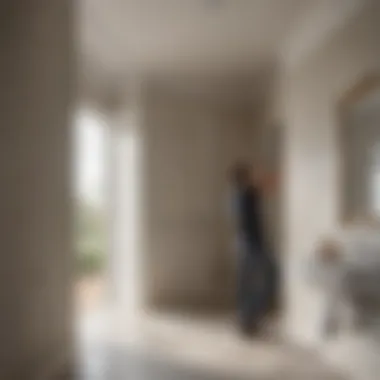
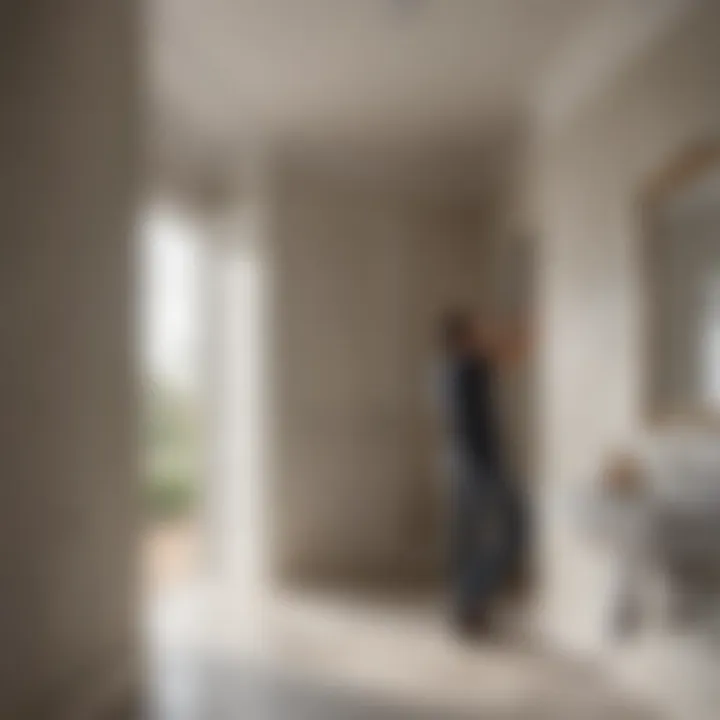
Sealing comes into play after painting to create an extra layer of protection against moisture. Sealants help safeguard your walls from damage over time, providing a robust shield against water seepage.
Key Characteristic: Sealants form a protective barrier that minimizes water absorption into the drywall.
Unique Feature: Some modern sealants are clear and can be applied over painted surfaces, which can help maintain the aesthetic you’ve carefully chosen while still providing protection.
- Advantages: Increased durability and enhanced resistance to mold and mildew.
- Disadvantages: Application requires some skill; poor application could result in a cloudy or uneven finish, which might detract from the paint job beneath.
In summary, implementing effective finishing techniques not only enhances the visual appeal of renovations but also ensures that the walls can withstand the damp conditions commonly found in bathrooms. This will leave you with a professional-looking finish and peace of mind about the longevity of your investment.
Maintenance Considerations
When it comes to bathroom renovations, applying drywall mud correctly is just the tip of the iceberg. Once you’ve gone through the intensive work of installing and finishing your drywall, ongoing maintenance becomes crucial. Regular upkeep ensures the longevity of your work, but lots of homeowners often overlook these essential factors. Maintaining drywall mud can save you tons of headaches later, especially in an environment prone to moisture and humidity.
Routine Inspections
A stitch in time saves nine. Routine inspections are vital for catching potential problems before they escalate. A homeowner should develop a habit of examining their bathroom at least every few months. Look for signs of water damage, such as bubbling paint or peeling drywall. These indicators could signal that your drywall mud has not held up against the moisture as it should.
Consider these checkpoints during inspections:
- Visual checks: Inspect all walls for discoloration, cracks, or any deformities that look out of place.
- Touch tests: Gently press areas where you see potential issues. If it feels soft, it may be trouble underneath.
- Smell tests: Lingering damp odors can point to mold growth, which needs immediate attention.
By routinely checking your bathroom, you'll preserve the integrity of your renovations and reduce the chances of expensive repairs down the line. Simple inspections can help spot issues before they balloon into costly fixes.
Repairing and Touch-ups
Life happens, and sometimes walls take a beating. Whether it’s a minor dent from a wayward bottle or scarring from an accident, knowing how to handle touch-ups can keep your bathroom looking fresh and polished. Getting the right materials makes a world of difference. Use a lightweight repair compound for small wall imperfections, as it's easier to sand and paint over than heavier products.
Here are some steps for effective repair and touch-ups:
- Prep the area: Clean the damaged spot. Remove any loose debris or peeling paint.
- Apply mud: Spread a thin layer of drywall mud with a putty knife, feathering the edges to blend with the surrounding wall.
- Drying time: Let it dry thoroughly. Depending on humidity, this can take anywhere from a few hours to overnight.
- Sanding: After the mud has dried, gently sand it until smooth. Use fine-grit sandpaper for a better finish.
- Painting: Once sanded, apply paint that matches your existing bathroom color. It’s wise to keep some extra paint from your original renovation for touch-ups in the future.
Maintaining drywall mud through routine inspections and timely repairs will not just enhance your bathroom's look but will also extend the lifespan of your renovations. Remember, an ounce of prevention is worth a pound of cure. Keeping these aspects in check will ensure you can enjoy your beautifully renovated space for years to come.
Alternative Products
In the realm of bathroom renovations, while drywall mud has its utility, it's prudent to consider alternative products that may offer specific advantages. These alternatives can enhance moisture resistance, durability, or ease of installation. Exploring these options isn’t just about finding substitutes but about optimizing the outcomes for both functionality and aesthetics in a moisture-prone environment.
Water-resistant Drywall
Water-resistant drywall, often referred to by the brand name Green Board, serves as a reliable substitute for traditional drywall in high-moisture areas. This product is treated with a special core and covered with moisture-resistant paper, making it less prone to warping and mold growth. When considering a switch to water-resistant drywall, here are some critical elements to keep in mind:
- Installation: Water-resistant drywall can be cut and installed much like regular drywall. However, it offers the added benefit of being more resilient to the bathroom's humid atmosphere. This is particularly fine in spaces like showers, tub surrounds, and other areas that are frequently splashed with water.
- Finish Compatibility: When using this type of drywall, choose finishing products that complement its properties. For instance, certain types of primer and paint can enhance its moisture-resistant qualities.
- Cost-Effectiveness: While water-resistant drywall tends to be slightly more expensive than standard drywall, the potential reduction in mold-related expenses and repairs can offset these initial costs.
Moreover, it offers a smoother surface that can easily be finished with paint or tiles, further enhancing the bathroom's aesthetic appeal.
Synthetic Plasters
An interesting alternative to traditional drywall mud is synthetic plasters. These products often incorporate polymer-based materials and offer some unique benefits:
- Flexible Application: Unlike traditional mud, synthetic plasters can adapt well to various surfaces and may even allow for a textural finish that adds character to bathroom walls. Their flexibility in application can also make it easier for the home renovator to achieve that perfect look without extensive labor.
- Rapid Drying Time: One of the significant advantages of synthetic plasters is their rapid curing and drying properties. This feature is particularly beneficial in renovation projects where time is of the essence. Homeowners can often finish a job in less time, which is a blessing when working with contractors and schedules.
- Customizable Finishes: Synthetic plaster can often be tinted or mixed with other agents to create aesthetically pleasing colors and textures. This allows for a personalized touch that can elevate the bathroom's overall design.
"Choosing the right materials is as important as the installation itself. A well-thought-out choice can save you time and money in the long run."
In summary, considering alternatives like water-resistant drywall and synthetic plasters could lead to a more resilient and visually satisfying outcome for bathroom renovations. Each option comes with its own set of benefits and considerations, but they ultimately can make a significant difference in enhancing durability and aesthetics in a space that faces everyday moisture.
Epilogue
In wrapping up our exploration of drywall mud's role in bathroom renovations, it’s crucial to emphasize the significant aspects that contribute to effective application and lasting results. The importance of drywall mud cannot be overstated; it serves as the unsung hero in ensuring that bathroom spaces not only look pristine but also withstand the unique challenges these environments present.
One of the foremost benefits of using drywall mud in the bathroom is its ability to facilitate seamless finishes on your walls and ceilings. Whether you're dealing with tricky angles or want to create a smooth surface before painting, drywall mud provides a level of versatility that makes tackling various renovations easy. Homeowners can enjoy the satisfaction of achieving a clean, professional look with some practice and the right techniques.
Moreover, proper application of drywall mud not only enhances aesthetics but also contributes to the overall durability of your walls. When accurately layered and treated, it can offer a protective barrier that minimizes moisture damage—an essential factor in bathrooms where high humidity can be an issue.
It's also worth noting the importance of long-term maintenance considerations. Regular inspections can prevent minor cracks or peeling, which could lead to bigger headaches down the road. Repairing or touching up areas where drywall mud has been applied is straightforward, allowing homeowners to maintain the beauty and functionality of their bathrooms with minimal effort.
Another critical element is being informed about alternative products that might complement or in some cases exceed the performance of traditional drywall mud in specific situations. Water-resistant drywall and synthetic plasters, for example, might be beneficial for those who want extra reassurance when renovating their bathrooms, protecting against mold growth and long-term degradation.
Ultimately, mastering the application of drywall mud not only adds value to your renovation project but also empowers homeowners and DIY enthusiasts alike with the skills necessary to achieve their desired outcomes. As with any home improvement task, a little patience and know-how can go a long way.
"Investing time in understanding the tools and materials of your craft opens doors to endless possibilities in home renovations."
Feel encouraged to delve into your next project with confidence, knowing that with the right approach, you can create a bathroom that is not only visually appealing but resilient against the trials of moisture and wear.







